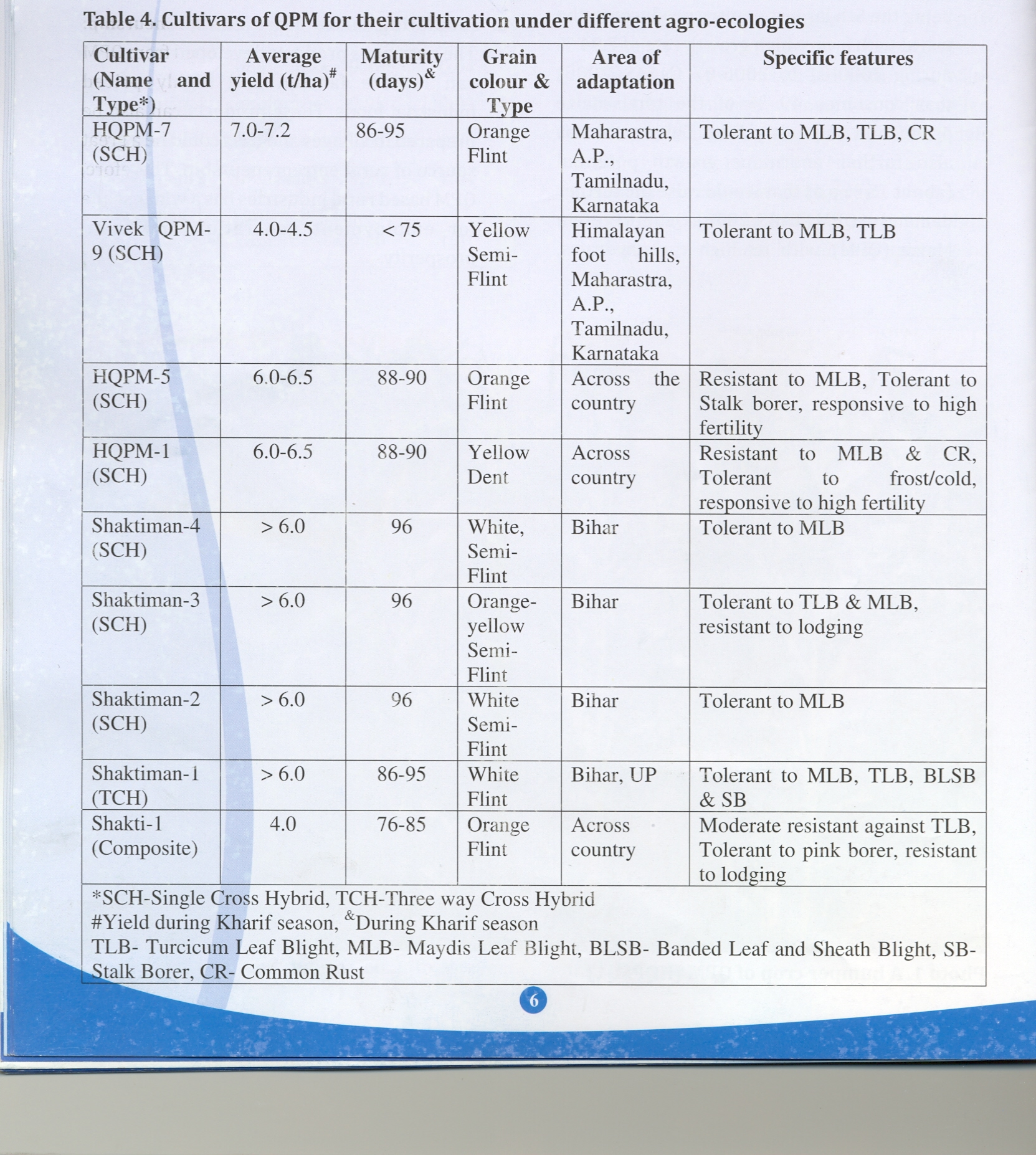Soils:
QPM can be grown successfully in wide range of soils ranging from loamy sand to clay. However, soils with good
organic matter content having high water holding capacity with neutral pH are considered good for better production.
Being a sensitive crop to moisture stresses particularly excess soil moisture; it is desirable to avoid low lying fields
having poor drainage. Therefore, the fields having provision of proper drainage should be selected for cultivation of
maize.
Selection of cultivars:
|
In India a total of nine cultivars of which 7 single cross hybrid, 1 three way cross hybrid and 1 composite of QPM having
different maturity period and grain colour (Table 4) have been developed by the public sector Institutes. These cultivars
have been developed and find suitable for their cultivation under different agro-climatic conditions having compatibility
under different cropping systems and preference of the local people. However, farmers are advised to grow single cross
hybrids for higher productivity but for the areas like tribal and high risk prone regions where hybrids cannot reach in
time due to seed constraints, the farmers can go for cultivation of composites.
|
|
| 
Photo 2. HQPM-1
| 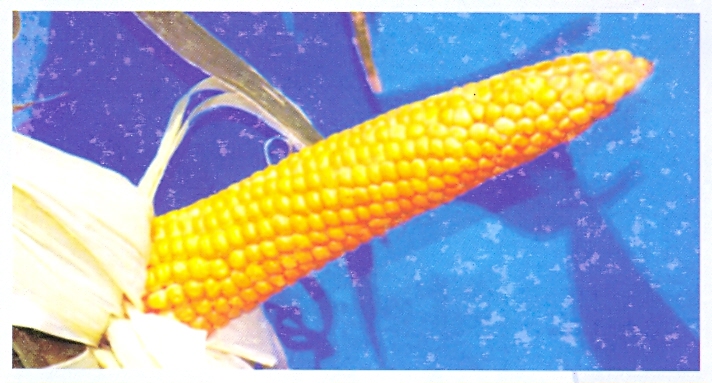
Photo 3. HQPM-5
| 
Photo 4. HQPM-7
|
|
| 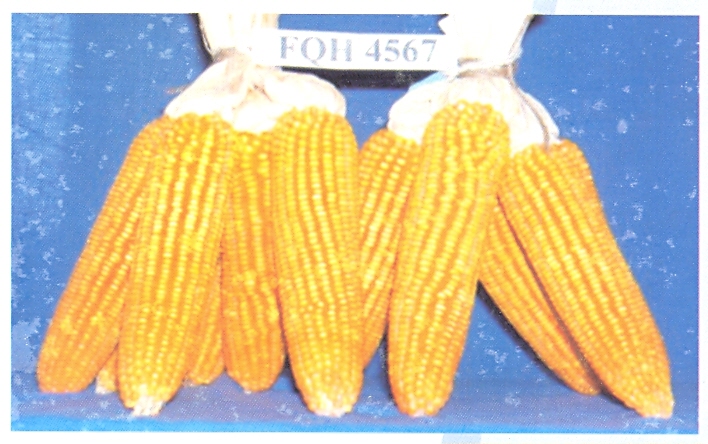
Photo 5. VIVEK QPM 9
| 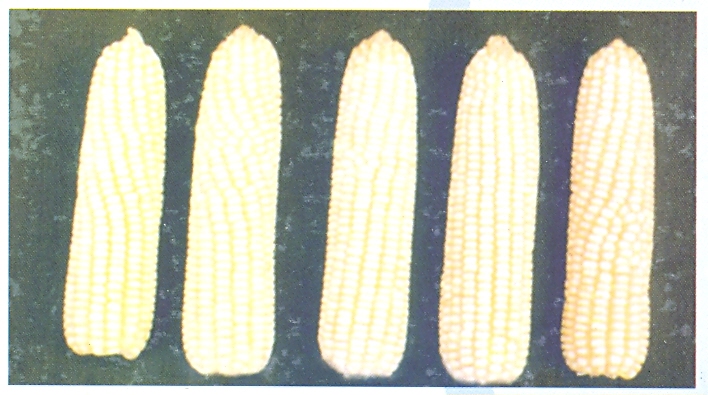
Photo 6. SHAKTIMAN-1
| 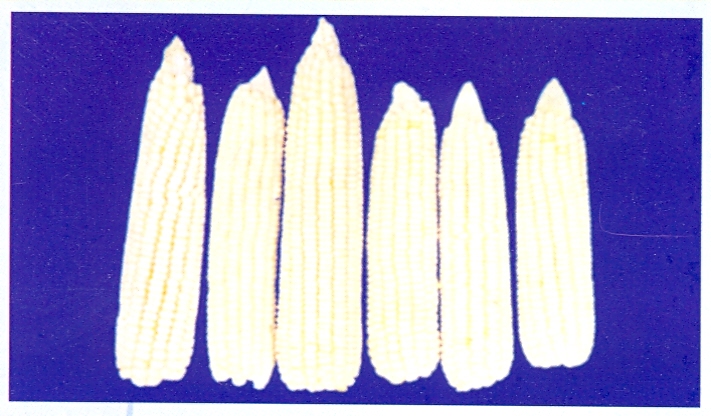
Photo 7. SHAKTIMAN-2
|
|
| 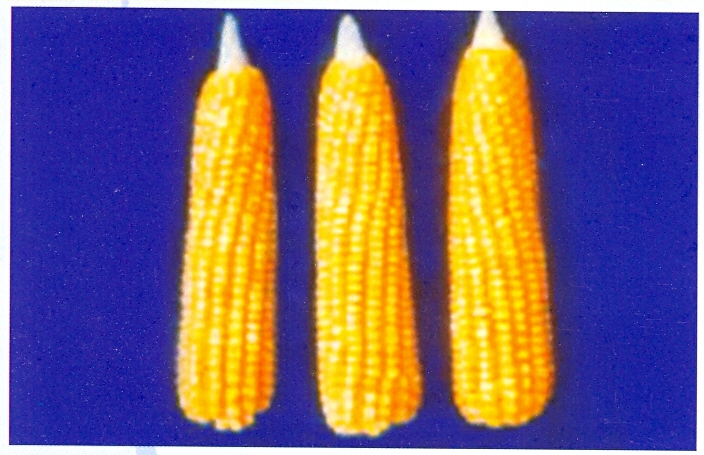
Photo 8. SHAKTIMAN-3
| 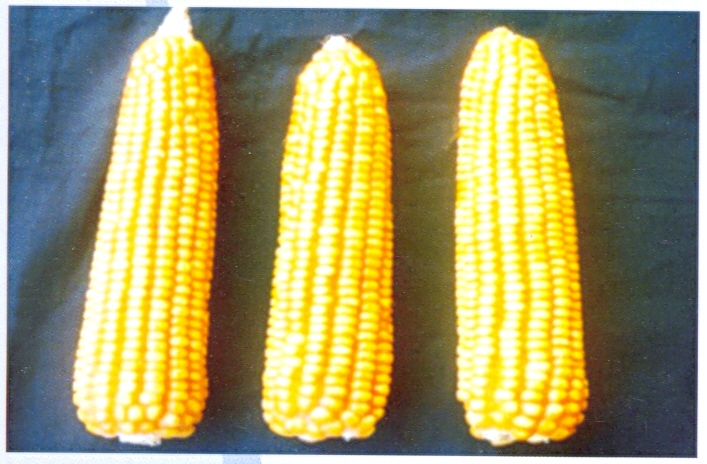
Photo 9. SHAKTIMAN-4
| 
Photo 10. SHAKTI-1
|
|
Time of sowing:
The QPM can be grown in all seasons viz; Kharif, post monsoon, Rabi and Spring. For higher productivity
particularly in Kharif season, for the farmers having sufficient irrigation facilities, it is desirable to complete
the sowing 12-15 days prior to onset of monsoon. However, in rainfed areas, the sowing time should be coincided with
onset of monsoon. The optimum time of sowing in different seasons are given in Table 5.
|
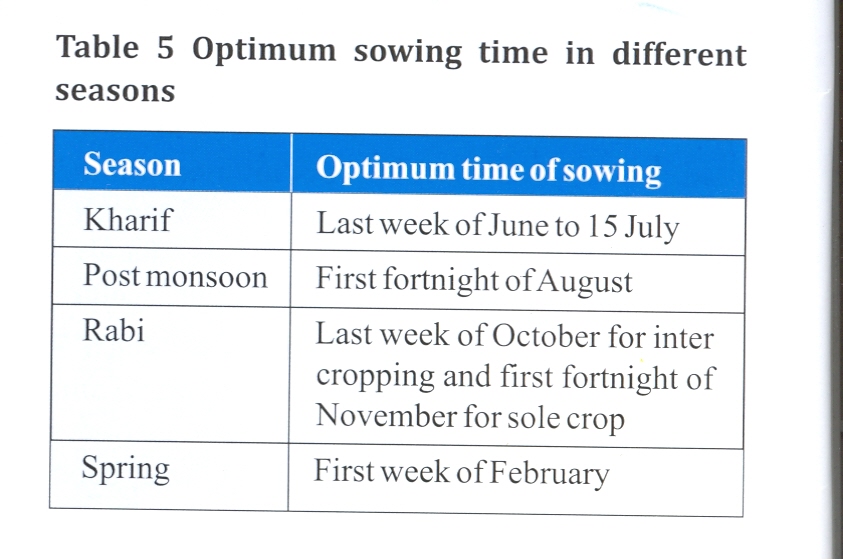
|
|
Seed rate and plant population:
The seed rate depends on seed size (genotype), season, sowing methods and the planter but, in general, 20 kg seed ha-1
is optimum for higher productivity and input use efficiency. A plant population of about 70000 to 80000 ha-1 with a
plant geometry of 60 to 70 x 20 cm (row x plant) is optimum depending upon the season.
Seed treatment:
To protect the seed from seed and major soil borne diseases and insect-pests, it is always advisable to treat the seed
with fungicides and insecticides before sowing as per the details given in Table 6.

Method of sowing:
Mainly the maize is sown directly through seed but during winters where fields are not vacant in time (till November),
transplanting can be done successfully by raising the nursery. However, the method of sowing depends on season, cropping
system, soil conditions and time of planting. The sowing methods for situation specificity are described as follows-
(i) Raised bed planting: In general the raised bed planting is best planting method for maize during monsoon
and winter seasons both under excess moisture as well as limited irrigation availability conditions. Sowing should be
done on the southern side of the east-west ridges/beds, which helps in Photo 11. Planting on permanent beds
good germination. Planting should be done at proper spacing. Preferably, the raised bed planter (Photo 11) having
inclined plate, cupping or roller type seed metering systems should be used for planting that facilitates in placement
of seed and fertilizers at proper place in one operation that helps in getting good crop stand, higher productivity
and resource use efficiency. Using raised bed planting technology, 20-30 % irrigation water can be saved with higher
productivity. Moreover, under temporary excess soil moisture/water logging due to heavy rains, the furrows will act
as drainage channels and crop can be saved from excess soil moisture stress.
|
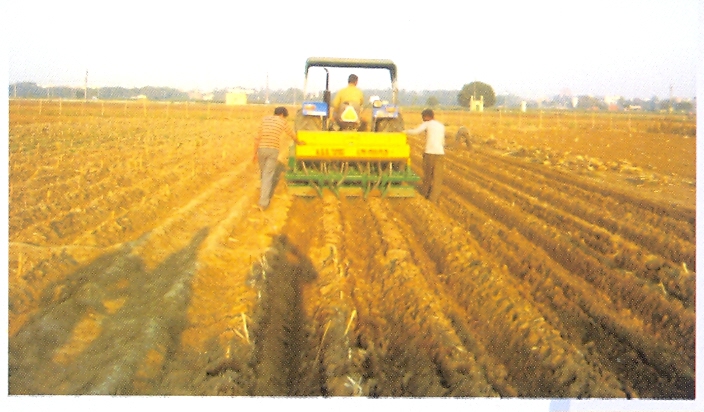
Photo 11.Planting on permanent beds
|
(ii) Zero-till planting: Maize can be successfully grown without any preparatory tillage under no-till
situation with less cost of cultivation, higher profitability and better resource use efficiency. Under such
condition one should ensure good soil moisture at sowing and seed and fertilizers should be placed in band using
zero-till seed-cum-fertilizer planter with furrow opener as per the soil texture and
Photo 12. Zero-till maize field condition. Large number of farmers particularly under rice-maize systems in peninsular
and eastern India (Photo 12) are practicing successful zero till planting and getting higher farm profitability.
|

Photo 12. Zero-till maize
|
(iii) Transplanting: Maize can also be established and grown successfully with transplanting during winter
season. Under intensive cropping systems where field are not vacant in time and where chances of delayed planting exists.
Therefore, for the situation where fields are vacated during December- January, it is advisable to grow nursery and
transplant the seedlings in furrows and apply irrigation water for proper establishment. Using this technique, temporal
isolation can also be maintained in corn growing regions for purity and good quality of QPM. For one hectare, 700 m2 area
is required for nursery and the nursery should be raised during second fortnight of November. |

Photo 13 Nursery raising,uprooting and transplating of maize during winter
|
The 30-40 days old
seedlings (depending on the growth) should be transplanted during December-January in furrows (Photo 13) as the yield
in furrows is always higher than flat (Figure 4).
(iv)Flat planting: For rainfed areas and on conserved moisture, flat planting can be done using seed-cum-ferti
planters.
(v)Furrow planting: During spring season, it is always advisable to grow maize in furrows for proper growth,
seed setting and higher productivity.
|
|
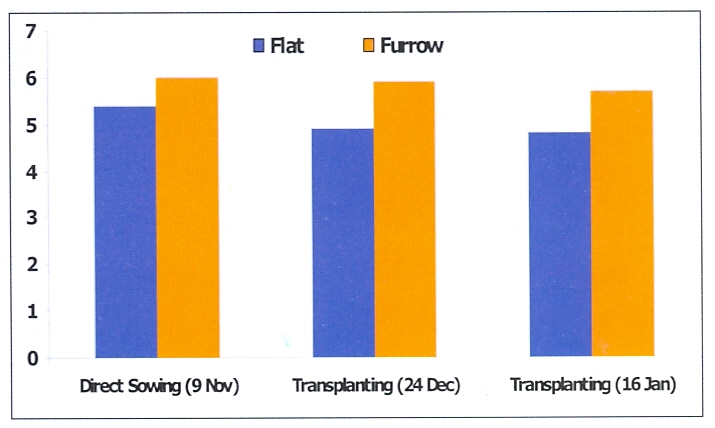
Figure 4 comparativegrain yield (t/ha) of maize transplanted in furrows and flats at different dates |
Nutrient management:
Maize in general and hybrids in particular are very responsive to nutrients. Besides, chemical fertilizers, it is very
responsive to organic manures. The application of nutrients depends mainly on soil nutrient status and cropping system.
For getting desirable yields, the nutrient applications should be done in such a way that matched the soil supplying
capacity and plant demand (SSNM approach) keeping in view of the preceding crop (cropping system). Results of
multilocation trails under All India Coordinated Research Project on maize (Figure 5) revealed that SSNM approach
led to remarkably higher productivity over existing recommended practice acoss the ecologies. The maize in general
responds well to organic manures. The results of integrated nutrient management (INM) trials on QPM under AICRP on
Maize demonstrated the response of QPM to FYM (Figure 6). Therefore, in general application of 10 t FYM ha-1, 10-15
days prior to sowing supplemented with 150-180 kg N, 70-80 kg P2O5, 70-80 kg K2O and 25 kg ZnSO4 ha-1 gives higher
economic yields. Full doses of P, K and Zn should be applied as basal. Results of multi-location trials carried out
under AICRP on maize revealed that application of nitrogen in 5-splits (as mentioned below) leads to higher
productivity and nitrogen use efficiency compared to recommended 3- splits (Figure 7). N application at grain
filling results in better grain filling. Therefore, nitrogen application should be done in five splits as mentioned
below for higher N use efficiency.
1. 10 % N should be applied as basal
2. 20% N at 4 leaf stage
3. 30% N at 8 leaf stage
4. 30% N at flowering stage
5. 10% N at grain filling
|

Figure 5 Performance of SSNM in Kharif maize over other practices across the locations

Figure 6 Yield (kg/ha) response of QPM under different soil and climatic conditions
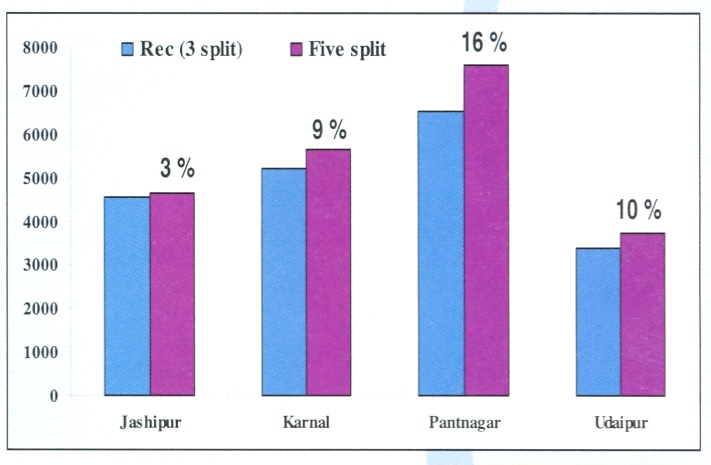
Figure 7 Comparative grain yield (kg/ha) of maize with 3 v/s 5-splits of nitrozen at different location
|
Water management:
The water management depends on season as about 80 % of maize is cultivated during monsoon season particularly under
rainfed conditions. However, in areas with assured irrigation facilities depending upon the rains and moisture
holding capacity of the soil, irrigation should be applied as and when required by the crop and first irrigation
should be applied very carefully wherein water should
Photo 14. Optium of Height of Water in Furrows
not overflow on the ridges/beds. In general, the irrigation should be applied in furrows upto 2/3rd height of the
ridges/beds (Photo 14). Young seedlings, knee high stage, flowering and grain filling are the most sensitive stages
Photo 15. Irrigation in alternate furrows
for water stress and irrigation should be ensured at these stages. In raised bed planting system, the crop
can also be irrigated in alternate furrow to save more irrigation water (photo 15). In rainfed areas, tied-ridges
(Photo 16) are helpful in conserving the rainwater for its availability in the root zone for longer period. For
winter maize, it is advisable to keep soil wet (frequent & mild irrigation) during 15 December to 15 February
to protect the crop from frost injury.
|
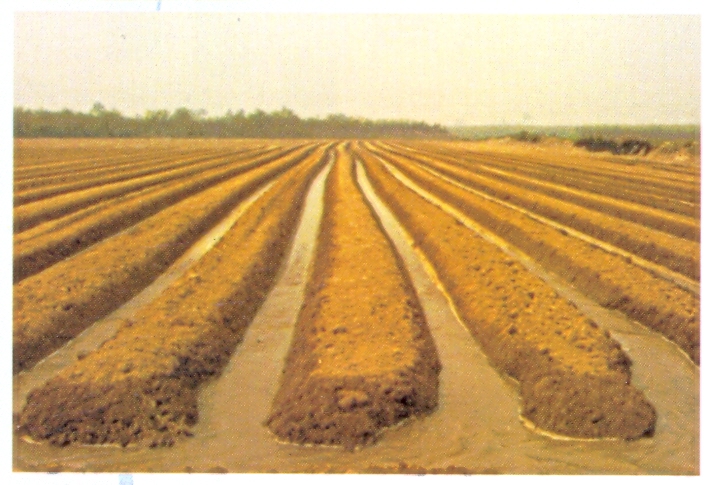
Photo 14 Optimum height of water in furrows |

Photo 15 Irrigation in alternate furrows |

Photo 16 Tied ridging |
Weed Management:
Weeds are the serious problem in maize(Photo 17), particularly in monsoon season that competes with maize for nutrient
and causes yield loss up to 35 %. Therefore, timely weed management is needed for achieving higher yield.
Atrazine being a selective and broad-spectrum herbicide in maize checks the emergence of wide spectrum of weeds.
Pre-emergence application of atrazine @ of 1.0-1.5 kg a.i ha-1 in 600 litre water is effective way for control
of weeds. While spraying, the person who is doing spray
should move backward so that the atrazine film on the soil surface may not be disturbed. Preferably three boom
flat fan nozzle may be used for proper ground coverage and saving time.
|
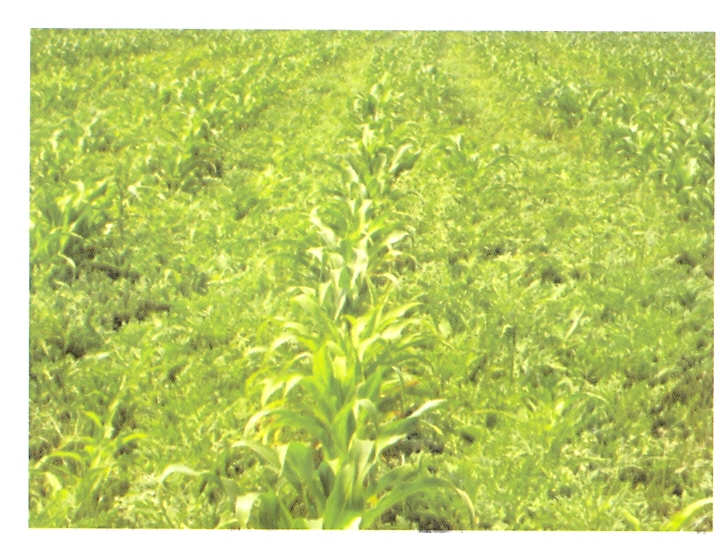
Photo 17 Weed infestation in maize |
One to two hoeings are recommended for
aeration and uprooting of the remaining weeds, if any. While doing hoeing, the person should move backward to
avoid compaction and better aeration. For areas where zero tillage is practiced, pre-plant application
(10-15 days prior to seeding) of non-selective herbicides viz., Glyphosate @ 1.0 kg a.i. ha-1 in 400-600 litre
water or paraquat @ 0.5 kg a.i. ha-1 in 600 litre water is recommended to control the weeds.
|
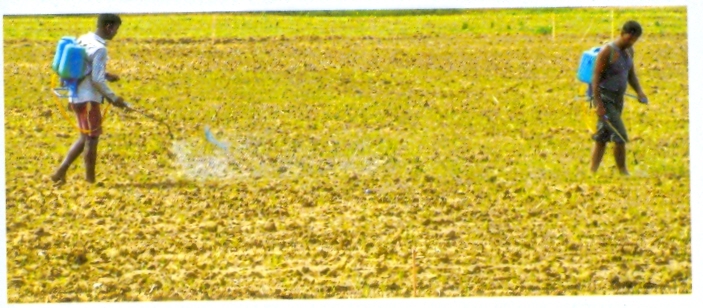
Photo 18 Pre-emergence herbicide application |
Crop protection:
Insect-pest management
Maize stalk borer (Chilo partellus) is a major pest during monsoon season throughout the country that lays eggs on lower
side of the leaves 10-25 days after germination. The larva of the Chilo enters in the whorl and cause damage in the
leaves. Whereas Sesemia (Photo 20) inference occurs during winter season particularly in peninsular India where winter
maize is important crop and the moth of the Sesamia is nocturnal and lays eggs on lower leaf sheath. The larvae of the
Sesamia enter the plant near the base and cause damage to stem. For control of Chilo, foliar spray of 0.1 % Endosulfan
{700 ml (35 EC) in 250 litre water} 10 days after germination is effective. It can also be controlled by release of 8
Trichocards (Trichogramma chilonis) per ha at 10 days after germination. Intercropping of cowpea with maize is an
eco-friendly option for reducing the incidence of Chilo on maize. Results of the trials conducted under AICRP on maize
revealed that compared to other crops, the Chilo egg load on maize was drastically reduced when it was intercropped
with cowpea (Figure 8). Termite (Photo 21) is also an important pest in many areas and for control of this fepronil
granules should be applied @ 20 kg ha-1 followed by light irrigation. If the termite incidence is in pathches, fepronil
should be applied spot application @ 2-3 granuled/plant. applies Chloropyriphos @ 2.5 litre/ha mixed in sand followed
by irrigation. |
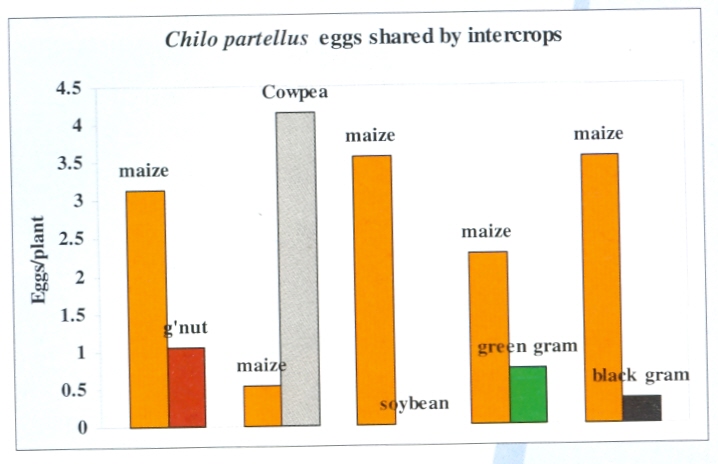
Figure 8. Effect of different intercrops in maize on Chilo egg laying
|
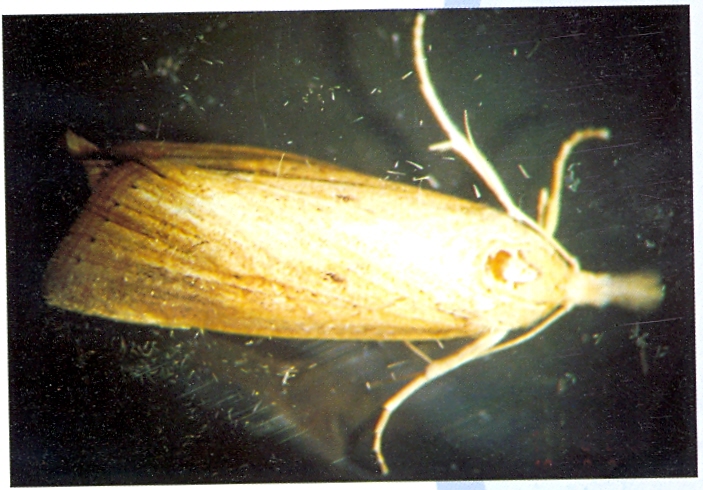
Photo 19: Chilo partillus |

Photo 20: Sesamia |
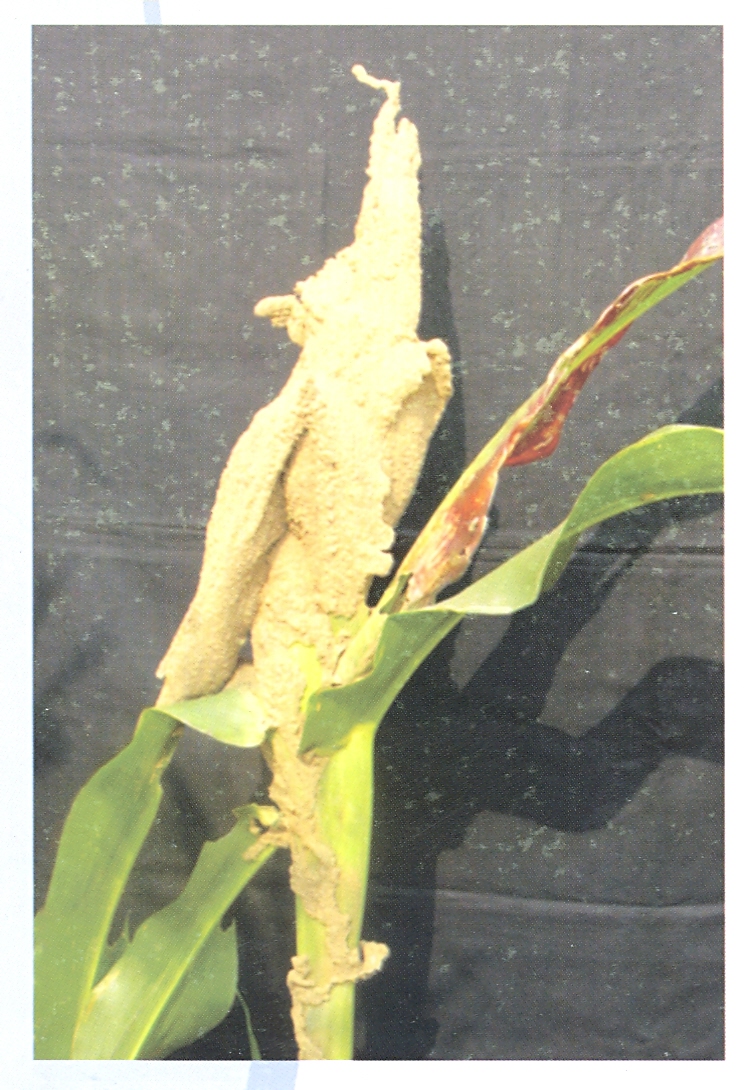
Photo 21: Termite |
Disease management:
Several diseases occur during different seasons in various parts of the country that leads to loss to yield if not
managed properly in time. Estimated losses due to major diseases of maize in India is 13.2% of which foliar
diseases (5 %), stalk rots, root rots, ear rots (5 %) cause major yield losses. The major diseases and their
management practices are described as below-
Turcicum leaf blight (TLB): Spray Zineb/Meneb @ 2.5-4.0 g/liter of water (2- 4 applications) at 8-10 days
interval
Maydis leaf blight(MLB): Spray of Dithane 2-75 or Zineb @ 2.4 – 4.0 g/liter of water (2-4 applications) at
8-10 days interval after first appearance of symptoms of disease
Polysora Rust: Three sprays of Dithane M-45 @ 2-2.5 gm/liter beginning from first appearance of symptoms at 15
days interval.
Banded leaf and sheath blight (BLSB): Seed treatment of peat based formulation (Pseudomonas fluorescence)
@ 16 g/kg of seed or as soil application @ 7g/liter of water (soil drenching) or foliar spray of Sheethmar
(Validamycin) @ 2.7 ml /liter water.
Post Flowering Stalk Rot of Maize (PFSR): Avoid water stress at flowering. Use balance dose of
nutrients wherein potassium application helps in minimising the disease. Use of bio-control agents
(Trichoderma Formulation) in furrows after mixing with FYM @ 10g/kg FYM at 10 days prior to its use in the field.
Downy mildews (DM): Seed treatment with fungicides like Apron 35 WS @ 2.5 g/kg seed.
|

Photo 22: Turcicum Leaf Blight

Photo 23: Banded leaf and sheath blight
|
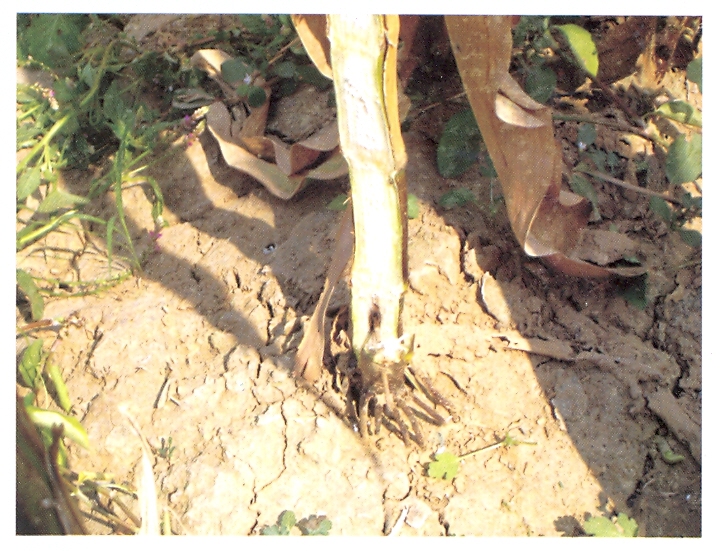
Photo 24: Post Flowering Stalk Rot
|

Photo 25: Sorghum Downy Mildew
|
Harvesting and post harvest management:
Harvesting should be done at optimum moisture content (20%) in grain to avoid post harvest losses due to store
grain pests and diseases. The harvested cobs should be sun dried before shelling and should be shelled at 13-14 % grain
moisture. Shelling can be done manually or by power operated maize Sheller. For proper storage of the grain, drying
should be done till the moisture content is reduced to 8-10 % and should be kept in aerated jute bags. |
|
|
